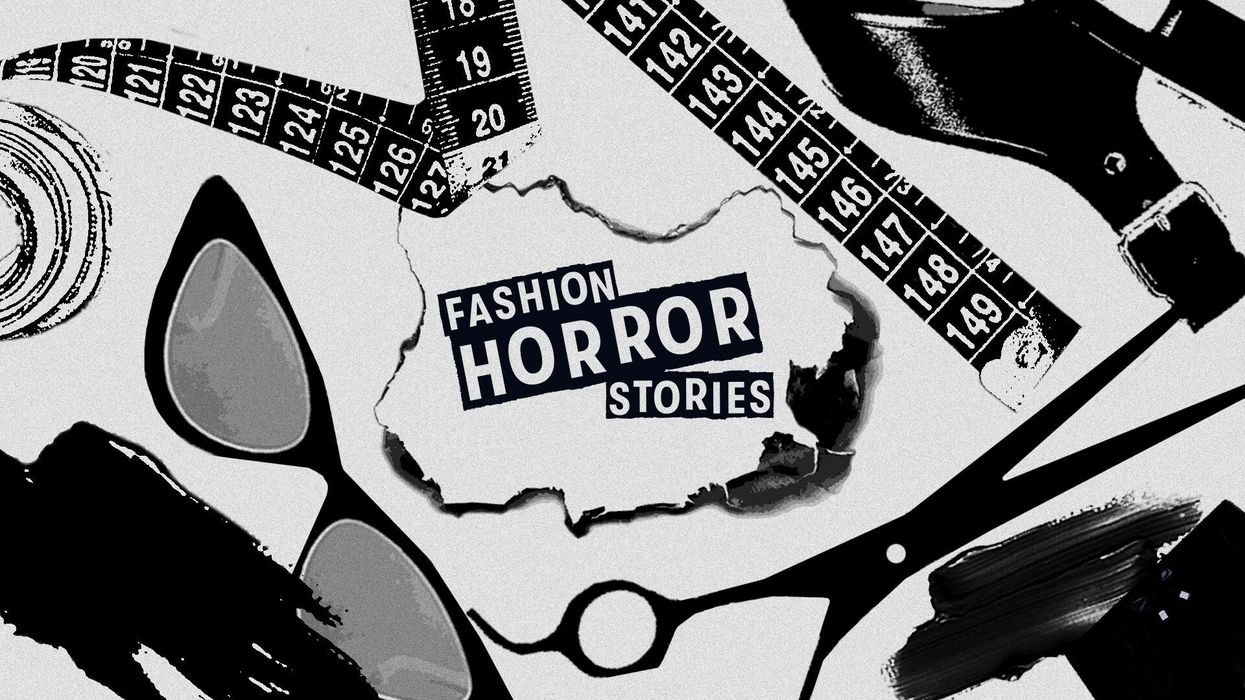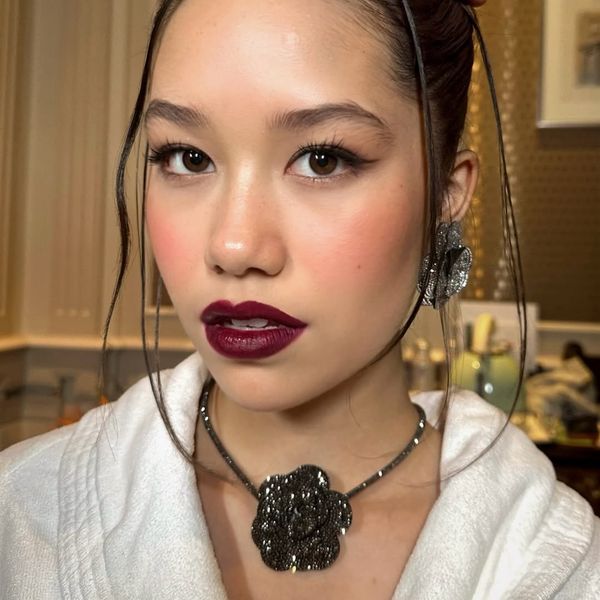From All-Nighters to Crying in the Stairwell, Here’s How One Graphic Designer Survived the Fashion Industry
What does it mean to be a “team player”?

The fashion industry is known for its volatile creatives and unshakable self-seriousness. If you ask anyone who’s worked in fashion or at a magazine if it’s like The Devil Wears Prada, they will likely tell you that’s a G-rated shadow of their lived experience. With our generation’s waning patience with abusive workplaces and megalomaniac bosses, these stories from our collective past are taking on a new light. Often dismissed flippantly as part of “paying our dues,” fashion veterans and current employees alike are re-examining their experiences with newfound clarity. Somehow, even in this relatively progressive era we’ve entered, the fashion industry remains one of the last bastions of unchecked and wildly inappropriate behavior. From former fashion interns to magazine assistants to models, we’re compiling an oral history of fashion workplace experiences in the series Fashion Horror Stories.
From PR Intern to Graphic Designer at a New York City fashion house, this is Michael’s Fashion Horror Story:
Are you feeling prepared?
“I’m ready to relive my nightmares.”
Great.
[Laughs.]
I love retraumatizing everyone with these interviews. My first question is—just to cover the bases—how did you get into fashion? What was your first job?
“I graduated at the tail end of the Great Recession in 2009. I was coming out of one of the top business schools in the country, the University of Michigan Ross School of Business, and it was impossible to find work. After moving to New York City, I was willing to do anything to get a job. I applied to bag groceries at Whole Foods, tried to be a shoe salesman at a SoHo boutique, and even applied for a sales rep position at a company that chartered helicopters. Then my mentor, who works in fashion, called me and said, ‘Hey, this designer has a PR opening. It’s an unpaid internship, but it could lead to something.’ So I started working in-house at a well-known fashion boutique in NYC on the PR side.”
What was your day-to-day like working there?
“I worked on the showroom floor doing basic intern stuff—packing clothes to be sent to whatever magazine or celebrity, managing databases, that sort of thing. I wasn’t working directly for the designer at that time, but I would catch glimpses of her interactions with other staff members. I heard the sternness of her voice, maybe an edge of meanness, but I didn’t think much of it at the time.”
When did you begin working more closely with her?
“After three months as an intern, I needed to get paid, so I accepted a job as an executive assistant working for a production house based out of New Zealand. After two months of working for $12 an hour, the designer called me back and said, ‘There’s an opening; our graphic designer just left.’ I didn’t have any experience as a graphic designer at all, but I needed the money, so I took it. Over my winter break, I bought Photoshop for Dummies and InDesign for Dummies and studied those intently, planning to learn on the job.
“As a PR intern, I was on the showroom floor, but as a graphic designer, I worked in the lion’s den. My desk (well, it wasn’t so much a desk as a storage unit with a bunch of shit on it) was right next to where she was designing clothes. I stayed there for two years.”
How would you describe the office environment?
“It was always frantic. When she was in the office, the atmosphere was dependent on her mood—the type of press she had gotten, how well the response was from her show, and how well she was selling to department stores–everything was very reactionary to how the business was doing and how she was perceived in the press. On top of that, she wanted to curate an image for herself as a celebrity.”
With the emotional tides dictating the office environment, what was your relationship like with your coworkers?
“It felt like it was the employees against her; honestly, it was very much a trauma-bonding situation. I remember a woman who got hired as her PR manager, and she always got the shorter end of the stick. There was a lot of yelling. I received a fair amount of the yelling too, but that bonded all of us—especially during fashion week.”
What happened during fashion week?
“My first fashion week was exciting because I had no idea what to expect, but I quickly started to dread them. Before a show, my boss would finish the looks around 1 or 2 a.m., then it was my job to design the run of show with the information she gave me. I was there until 5 a.m., then I had to go home, shower, and go right back bright and early to prepare for the show and a whole day of work. It was absolute chaos—fashion interns were working all night for free. It was a borderline sweatshop.
“The work doesn’t end with the show. Oftentimes, you shoot the lookbook at the same time because it makes the most sense economically. Once I got the raw photography files, the lookbook had to go out immediately. Mind you, I’d already worked an entire night and day before this, and now I had to work on all her retouching notes. Her notes were never simple. ‘Swap this head with this head. This person needs more hair. This person is too big; make her skinnier. She needs to be taller. Her neck is too short.” Keep in mind that I don’t have a lick of graphic design experience, so I learned how to Photoshop on-site. The funny thing is she made me do the same thing to all of her photos as well.”
What was your dynamic with her one-on-one?
“It became increasingly scary because she was never happy. Everyone became a target of her frustrations with where the company was going. Early on, she was more patient with me because she knew I wasn’t a seasoned graphic designer, but as budgets were cut and my responsibilities mounted, her temper was more volatile. As resources dwindled, I became the in-house photographer, the social media person, assisting with marketing and digital, all on top of being the graphic designer.
“There was one event called Fashion’s Night Out—it was something Vogue put on that ended up being a disaster because it was essentially a fashion frat party across New York City. My boss had a party in our store, and I was attending as the photographer and general help, I guess. When they ran out of champagne, I had to run out and replenish the stock for the whole party by myself, lugging twelve bottles of Cristal through the madness of FNO. The party was sloppy, and the floors were covered in dirt and spilled champagne. Mid-party, I was on my hands and knees scrubbing the floors around everybody’s feet.
“I did a lot for her. Whatever my job title was, I cared about making a good impression and being as much of a team player as possible. Remember those two words, team player, because they make a comeback later on.”
In what moments did you feel you were in a fashion nightmare?
“It’s not so much a specific anecdote because there were a lot of days I’d spend my lunch breaks crying in the emergency stairwell and calling my mom to say, ‘I don’t know how I’m doing. She’s never happy. She’s either yelling at me or yelling at someone else.’
“There was one time when I went on my lunch break to see an apartment. The thing about New York City is that if you find an apartment, you need to apply immediately with no lag time. My lunch break was around 45 minutes, and I may have gone over just a touch, but I just needed to get this apartment. When I came back, I went to deliver some papers to her in the showroom that she had asked me to bring down, and she burst out screaming, ‘Where were you? Why did you leave the office? You should never be leaving the office!’ Mind you, she had sales clients behind her. At that point, I just couldn’t take it anymore. I rolled my eyes and walked out the door. She screamed after me, ‘Don’t you ever do that again, or you’re never going to have a job!’ I think that’s probably when a lot of crying in the stairwell began. That was a turning point in our relationship where she knew I didn’t like her and was frustrated with me.”
Did things escalate from there?
“At that point, you could tell the company wasn’t doing well, and that was impacting her mood over time. Her husband also worked at the company, and one day, when she was in his office, I walked by, and I could tell that both of them had just snorted a line of cocaine off their desk. It was an eye-opening moment of thinking, ‘Well, now there’s drugs involved in the management of all the employees. This isn’t going to go well at all.’”
What ended your two-year stint at the company?
“We usually got paid every other Thursday, and one Thursday came around—no paycheck. We all came into the office like, ‘What the fuck is going on?’ She had this new president there, and they sat us in the showroom and said, ‘Look, our payroll account went negative. Unfortunately, we can’t pay you right now, but we’re going to figure it out.’ The expectation, of course, was that we were still supposed to work. For whatever reason, a lot of us did because we believed in good faith that we would get paid.
“Another week went by—still no paycheck. She gave everybody a check for $400 to ‘get by,’ which was relatively nothing, but I still accepted it and went into the office. Week after week went by, payday came around, and we still didn’t get paid. That’s when I’d had enough, so I started coming in three days a week and looking for other jobs. I wanted to keep the company running and try to help out as much as possible while I looked for other work.”
“I came in on a Friday—still no paycheck—to check on some work, and my manager came up to the lion’s den where I was sitting and said, ‘She’s firing you. She doesn’t think you’re a team player.’ I think the fact that she said I’m not a ‘team player,’ given everything I’ve done for her for the past two years, hurt more than actually being fired. To this very day, she technically still owes me a paycheck.”
How did that experience shape the person you are now?
“As a manager, I swore never to let my emotions get in the way of how I work. I always want to foster an environment that feels supportive and caring, I think it's in my nature, but even more so because of that experience. Sometimes, it’s hard to remember the exact details of what happened while I was there; based on my childhood history, I tend to black out what I need to black out. That superpower was reignited while I was working there. It was just too much for me to deal with.”
Looking back, would you have done anything differently?
“I know now that nothing is worth that amount of stress, but when your very first experience in the job market is not being able to find one, at the time, you put up with more than you can deal to keep the job in fear of losing it. You think, ‘Well, it’s either this or I’m homeless.’ And there has to be some sort of Stockholm Syndrome for abusive workplaces because I could have started finding another job sooner, but I felt like I couldn’t: I felt like I owed something to her. That was my mistake. Not sticking up for myself. Not taking things so personally. Not putting myself first. But then again, at 24 with a sullied perspective on the job market, what else was I supposed to think at the time?”




